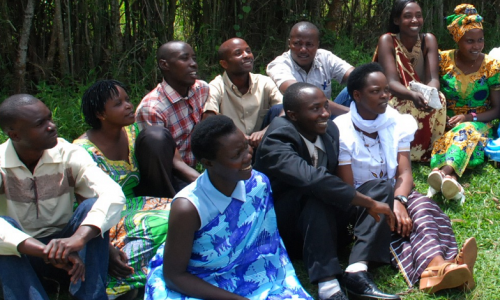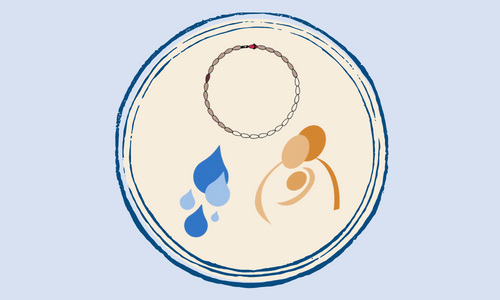What’s stumping us: A snapshot of what we know about fertility
What you would say if someone on the street asked you today, “True or False: Having sex during a certain time of the menstrual cycle can increase the chance of getting pregnant.” Setting aside the fact that this situation would be strange and unlikely, would you know the answer?
A recent study asking this and other fertility awareness-related questions revealed that the majority of women surveyed scored pretty low. There is a striking lack of knowledge among women (and mostly likely men too) about fertility and the way our bodies work. The study, published in Fertility and Sterility, analyzes findings from an online survey given to 1,000 women in the U.S. of various races, ethnic groups and socioeconomic levels around the country. In particular, knowledge about the menstrual cycle and conception were quite low, though knowledge did tend to increase with age.
Let’s take a look at what is stumping women about fertility.

A woman’s menstrual cycle—NOT to be confused with her period!—begins the first day of her menstrual bleeding and ends the day before her next period begins. Keeping track of periods is the first step to learn about menstrual cycle lengths and how they change over time. For most women, the average cycle length ranges anywhere between 25-35 days. Yet, each month, her cycle may vary, and this is completely normal. Tracking periods can help women be prepared for their next period and understand their body’s patterns.

In approximately 80% of all cycles, ovulation occurs on or within 48 hours of the midpoint day of the cycle (halfway between the beginning and the end). Because a large percentage of cycles are around 28 days long, it is true that ovulation tends to occur more or less 14 days before the next menstruation. But, keep in mind, cycle lengths may vary from cycle to cycle which means the exact day of ovulation varies too! If a woman wishes to use this information to avoid pregnancy, knowing the day of ovulation is not enough. She should seek out a tested and effective family planning method.

Contrary to what you may have heard, pregnancy is not possible every time you have sex. A woman only becomes pregnant if sperm is able to reach and fertilize the egg within 24 hours of it being released from the ovary. Healthy sperm can live between 3-5 days in a woman’s reproductive tract, so it’s possible to become pregnant from having unprotected sex up to 5 days before ovulation. Once a woman has ovulated, she stops being fertile that cycle after just one day because the egg dies within 24 hours of ovulation.

Since cycle length varies among women and even changes from cycle to cycle for the same woman, a woman who wants to avoid pregnancy should consider herself potentially fertile for 12 days each cycle. Based on data from the World Health Organization, women who usually have menstrual cycles between 26 and 32 days long are most likely to be fertile on days 8 through 19 of their cycles. Women wishing to become pregnant can use this information to time intercourse during the most fertile days of their cycles, while women wishing to protect themselves from pregnancy should avoid unprotected sex during this time.
Women who use this approach for monitoring their fertility can use the Standard Days Method® (SDM) of family planning. SDM is very effective (more than 95% when used correctly) and easy to use with CycleBeads®, the CycleBeads® app, or CycleBeads Online.

Cervical secretions are present to assist sperm in their journey up the reproductive tract to the egg. Without these secretions, sperm would not thrive or have the necessary motility to fertilize an egg—so secretions are a great indicator of fertility. Cervical secretions change in consistency throughout the menstrual cycle with clear, slippery secretions signaling the time just before ovulation. FYI, there are some things that can make it difficult to determine fertility based on cervical secretions, including having an infection in the uterus or vagina and having semen in the vagina.
Women who choose this approach to monitoring their fertility can use the TwoDay Method® of family planning which is more than 96% effective when used correctly.
With a little bit of effort, it really is possible to understand our bodies, including which days a woman can get pregnant and which days she won’t. It has everything to do with having the correct information. Fertility awareness is essential for men and women alike. If you want to use this information to avoid or achieve pregnancy, SDM and TwoDay Method may be right for you. But even if all you want is a better understanding of your body and your fertility, you’re now well on your way.
Stop being stumped and start being savvy!
IRH is actively working to make ‘fertility awareness’ a household term, encouraging men, women, and youth to be informed about their bodies and empowered to make healthy decisions. Through the USAID-funded FACT Project, IRH and partners are strengthening the evidence base and developing innovative solutions to improve fertility awareness in multiple countries.
 Where We Work
Where We Work  Press Room
Press Room  FACT Project
FACT Project  Passages Project
Passages Project  Learning Collaborative
Learning Collaborative  Search All Resources
Search All Resources  Social Norms
Social Norms  Fertility Awareness Methods
Fertility Awareness Methods